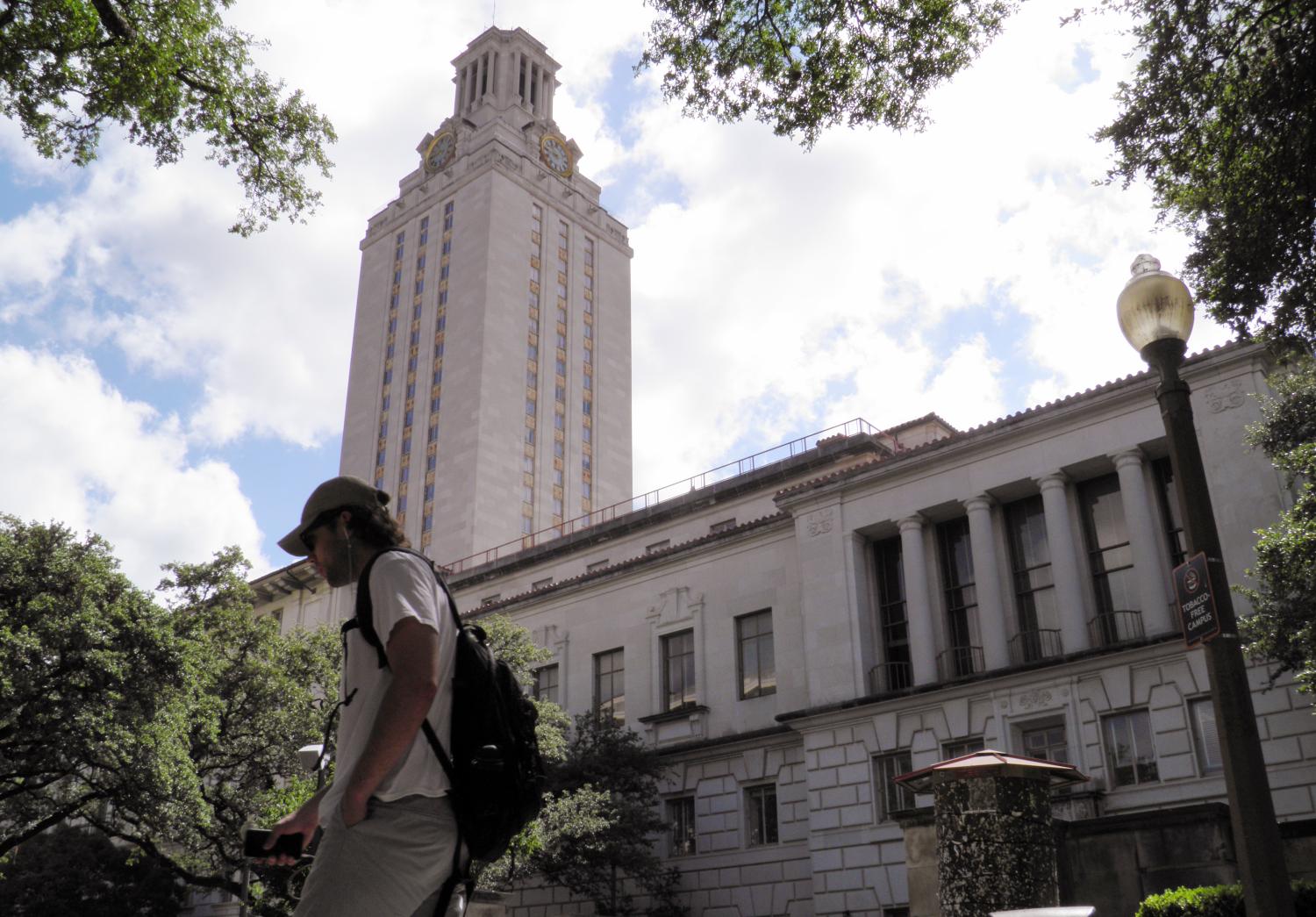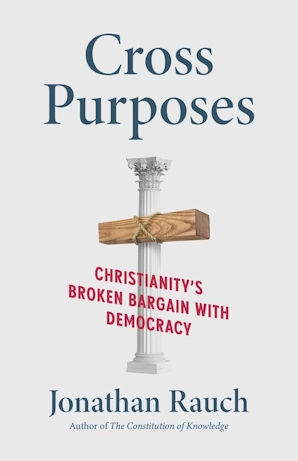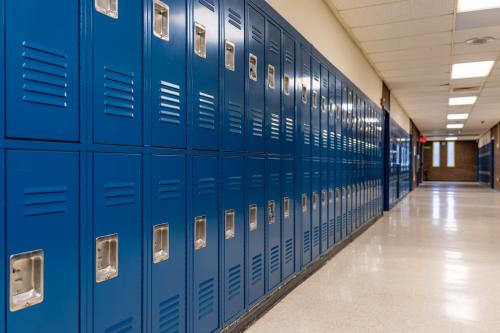Michelle Jones is in the middle of an unusual transition: she is beginning a Ph.D. program in History at New York University this fall, just after finishing a 20-year prison term for a serious crime she committed as a young woman.1 She was also accepted (before she was rejected) at Harvard.
Her story has sparked a passionate public conversation on the power of redemption, and the boundaries of public forgiveness. It also offers a window into an active debate regarding the role of criminal records—which may include arrests and misdemeanor convictions as well as felony convictions—in college admissions more broadly. Alongside a high-profile movement pushing employers to “ban the box” (BTB) asking about prior criminal history on job applications, a parallel effort has emerged to ban the box in the context of college admissions. This effort is also sometimes referred to as “beyond the box.”
In this brief, I examine the policy landscape and review available evidence to assess the potential benefits and costs of thinking beyond the box in college admissions. While Jones’ case is unusual in terms of both the severity of her crime and the exceptional nature of her academic accomplishments – and most of all for the contrast between the two – she is but one of a much larger group pursuing higher education while bearing a criminal record.
Asking about criminal history on college applications may pose a significant barrier to enrollment. Institutions, however, must balance issues of college access against legitimate campus safety and liability concerns. Six key findings emerge from the review:
1. Questions about criminal history are widespread in the admissions process, even at less selective and non-selective institutions.
Three national surveys of institutional admissions practices, conducted in 2009, 2010, and 2014 by separate research teams, indicate that 60 to 80 percent of private institutions and 55 percent of public institutions require undergraduate applicants to answer criminal history questions as part of the admissions process.2 While the practice is more common at four-year institutions, 40 percent of community colleges also report collecting such information. Even a relatively limited question at an otherwise non-selective institution can sometimes trigger extensive reporting requirements: for example, some community colleges require applicants with any felony convictions to pay for a full national background check.3
Financial aid is another channel by which the use of criminal history information may affect college access, beyond its role in admissions. In 1998, the U.S. Congress mandated a new question on the Free Application for Federal Student Aid (FAFSA) in order to prevent applicants with prior drug-related convictions (whether felony or misdemeanor) from receiving federal financial aid, including Pell Grants, Stafford Loans, and work-study.4 Since 2007, the scope of this question has been limited only to offenses that occurred while a student was receiving federal student aid. As a result, the question is now completely irrelevant for first-time college applicants, who by definition cannot have committed an offense while receiving aid. Still, all applicants see the question and have to answer it, potentially causing confusion and contributing to the FAFSA’s role as a documented barrier to college enrollment.52. The scope of criminal history requested in the college admissions process is often much broader than what employers typically request for a job application.
Institutions and employers vary in exactly how they ask about criminal history. But employers typically limit their questions to convictions rather than arrests, and often to felony convictions specifically, or even to felony convictions within a specified time frame.6 In contrast, it is common for institutions to ask about any type of conviction, including misdemeanors and even juvenile adjudications, without any time limitation. For example, the Common Application, used by over 700 schools and nearly one million applicants every year, asks about both misdemeanor and felony convictions, as well as guilty adjudications in the juvenile system.7
Schools that do not use the Common Application are sometimes even more expansive. For example, a U.S. Department of Education report found numerous instances of institutions asking for information beyond felony convictions, including pending felony charges, arrests, “other crimes,” and even warnings for trespassing.8 One of the two national surveys cited above found that a full third of admissions officers would consider even a pending misdemeanor or misdemeanor arrest negatively in the admissions process. Many college applications, including the Common Application, further inquire about high school disciplinary violations.93. The overlap in the population between those applying to college and those with a criminal record is bigger than many realize, and disproportionately affects men of color.
Approximately 30 percent, or nearly one in three Americans have been arrested at least once by the age of 23.10 Arrests rates are particularly high among young men of color: 44 percent of Hispanic men, and 49 percent of black men have been arrested at least once by the age of 23, compared to 38 percent of white men.11 Not every arrest leads to a permanent criminal record. But by the ages of 28 to 33, about 20 percent of men with at least a high school diploma but less than a bachelor’s degree hold some kind of criminal conviction or guilty plea.12
Prior research has also identified troubling racial disparities in the likelihood of arrest conditional on criminal involvement: blacks are nearly 3 times as likely as whites to be arrested for a drug crime, and more than 6 times as likely to serve time from a drug-related conviction, despite having similar or even lower rates of drug use and distribution than whites.13
It is more difficult to estimate how many of these individuals might also be pursuing higher education. But a study of the State University of New York (SUNY) system found that nearly 3,000 applicants in a single application cycle checked a box indicating they had a prior felony conviction, before SUNY removed the question from their application this year.14 This corresponds to about 3 to 4 percent of SUNY’s first-time undergraduates.15 If a similar rate holds nationwide, this would suggest over 120,000 college applicants each year with felony convictions. This likely understates the number potentially affected by BTB efforts, because (as discussed above) many institutions ask for information beyond felony convictions, and the policy may discourage some prospective students from even beginning an application.
4. The few studies to examine the effects of BTB on college enrollment suggest large negative impacts on those with convictions; however, “application attrition” appears quantitatively more important than explicit rejection.
One study compared drug offenders and non-offenders before and after the introduction of the drug-conviction question on the FAFSA. The authors estimated that “beginning the box” reduced immediate college enrollment rates by 12 to 22 percentage points for high school graduates with a recent drug conviction.16 More recently, an ongoing audit study submitted matched pairs of college applications with and without felony convictions to 271 four-year colleges, and found that application rejection rates were 12 to 13 percentage points higher for those with convictions.17
As Michelle Jones’ case illustrates, rejections typically do not occur automatically (and indeed such blanket bans can be illegal), but only after students complete a potentially lengthy additional screening process.18 This process can be uncertain, confusing and discouraging for students to navigate.19 A study of 3,000 SUNY applicants with felony convictions found that 62 percent failed to complete the application process, compared to just 21 percent of those without a conviction.20 In contrast, only about 10 percent of those who completed the process were ultimately rejected. For every applicant rejected at the end of the process, 15 failed to complete the application. This will understate the extent of so-called “application attrition” because it will not include those students that quit or never even begin an application because they do not want to reveal their criminal history.
5. Only a few studies have examined whether screening college applicants for criminal history reduces crime on campus. On the other hand, rigorous research supports the hypothesis that increasing access to education reduces subsequent criminal behavior.
Campuses are currently exceptionally safe places, and the students who do commit crimes while enrolled rarely have any prior record.21 But this could be interpreted as confirmation that current screening processes are working well. Indeed, maintaining campus safety is the number one reason institutions give for why they collect criminal history information.22
A recent review of the available research finds no evidence that screening applicants for prior convictions improves safety, but primarily because few studies exist at all.23 The most relevant evidence comes from a survey of graduating college seniors at one large public institution, which correlated measures of in-college misconduct to measures of pre-college misconduct. The study concluded that current application screening questions have low predictive value.24 Nor is there evidence that screening deters crime: a study of the introduction of the drug-conviction question on the FAFSA (cited above) found no evidence that young people acquired fewer convictions as a result.25
From a societal rather than institutional perspective, whatever gains might exist in terms of campus safety may be outweighed by an increased risk of recidivism among those who are excluded. Several rigorous quasi-experimental studies indicate that increasing education reduces crime.26 Thus, excluding applicants with prior convictions likely makes society less safe as a whole, even if it shifts some risk off-campus.
6. Research on employment-related BTB (and similar) policies suggests that some employers may react by statistically discriminating against groups with high rates of criminal involvement; however, this type of discrimination is less likely to be an issue in the context of college BTB.
Evidence is clear that criminal histories, when solicited early in the application process, present a major barrier to employment.27 But when employers are prohibited from asking about prior convictions on a job application, they may illegally attempt to use other observable characteristics – such as race, gender, and age – to infer an applicant’s likelihood of having a criminal history. This could have the unintended effect of lowering overall employment for groups with high rates of prior convictions, such as young black males, especially if employers’ underlying beliefs are racially biased. Indeed, several experimental and quasi-experimental studies have found evidence of such discrimination when employers’ access to applicant information is limited.28
Advocates of BTB argue that some results are more optimistic and that to the extent employers discriminate, this necessitates additional training and enforcement rather than a return to the box.29 But this type of perverse reaction seems less likely to pose a major concern in the college context in any case. First, implicit biases are more likely to emerge in the snap decision-making process of resume reviews rather than in the more deliberative, portfolio-based reviews conducted by college admissions officers at selective institutions.30 Second, many institutions are only minimally selective. Even if some college admissions officers revert to racially biased assumptions in the absence of criminal history, explicit rejections appear to play a relatively small role at many institutions, compared to the high rates of application attrition resulting from paperwork burden, confusion and discouragement. Finally, many colleges explicitly seek to enroll a diverse student population, and this may outweigh or at least counteract underlying biases against black males, who remain underrepresented on college campuses.
implications
Post-secondary education is increasingly necessary for labor market success. Given the scope of criminal histories often considered in college admissions, along with the prevalence of arrests and convictions among young people (particularly young men of color), a careful examination of the costs and benefits of thinking beyond the box is long overdue.
Last year, the U.S. Department of Education (under Obama) released a resource guide to help interested institutions reduce barriers for applicants with criminal histories. The report included a number of recommendations beyond simply “banning the box,” such as delaying the collection of such information until after an admissions decision is made, and ensuring that any necessary questions are clearly worded and narrowly focused.31
Since then, some states and large public systems have reconsidered the collection of criminal history in the admissions process. In June 2017, Louisiana became the first state to ban all public colleges in the state from asking about criminal history during the application process (with exceptions for convictions relating to sexual assault or stalking), while similar legislation in Maryland was vetoed by the governor.32 The board of the State University of New York (SUNY) voted 8 to 2 in 2016 to stop asking applicants about prior felony convictions, a policy that goes into effect this year.33 As more states experiment, it will provide the policy variation that is needed to more rigorously examine the impacts of such policies on both enrollments and campus safety.
Changes at individual private institutions are harder to track, but New York University – where Michelle Jones enrolled this fall – is among those that have recently decided to conduct initial application reviews without knowledge of prior convictions, even while the information is still collected and considered by a specially trained team at a later point in the process.34
While 29 states and 150 localities have recently adopted ban the box policies in employment law, the movement to ban the box in college admissions is still comparatively young and it is not yet clear whether it will sustain its momentum under the new administration. In the meantime, some individuals with criminal histories will face the resulting irony: they could be hired into low-skill positions at the very institutions that either disallow or discourage them from furthering their education.
The author did not receive any financial support from any firm or person for this article or from any firm or person with a financial or political interest in this article. She is currently not an officer, director, or board member of any organization with an interest in this article.
-
Footnotes
- Eli Hager, “From Prison to Ph.D.: The Redemption and Rejection of Michelle Jones,” New York Times (September 14), p. A1 https://www.nytimes.com/2017/09/13/us/harvard-nyu-prison-michelle-jones.html?mcubz=0.
- The Center for Community Alternatives (2010), Reconsidered: The Use of Criminal History Records in College Admissions, New York: Center for Community Alternatives; Matthew W. Pierce, Carol W. Runyan, and Shrikant I. Bangdiwala (2014), “The Use of Criminal History Information in College Admissions Decisions,” Journal of School Violence, 13:359-376; and Robert Stewart (2015), “Criminal History and College Application Process,” Presentation at American Society of Criminology Meetings, Washington, DC. November 18. In the CCA (2010) study, the researchers collaborated with the American Association of Collegiate Registrars and Admissions Officers (AACRAO) to survey all 3,248 of their member institutions. A total of 273 institutions responded, for a response rate of 8%. Pierce et al. (2014) randomly sampled 300 public and private non-profit institutions nationwide and invited them to complete a survey online, receiving 124 responses for an overall response rate of 41%. The Stewart (2015) study collected and analyzed 1,378 freshman applications for four-year colleges nationwide.
- See, e.g., Columbus State Community College, “Students with Felony Conviction(s)” http://www.cscc.edu/campus-life/student-conduct/criminal-history.shtml.
- Students were ineligible for federal student aid for one year following a first conviction for any level of drug offense, two years following second conviction, and permanently after a third conviction. See Michael Lovenheim and Emily Owens (2014), “Does federal financial aid affect college enrollment? Evidence from drug offenders and the Higher Education Act of 1998,” Journal of Urban Economics, vol. 81(C), pages 1-13.
- See, e.g. Eric P. Bettinger, Bridget Terry Long, Philip Oreopoulos, and Lisa Sanbonmatsu, “The role of application assistance and information in college decisions: Results from the H&R Block FAFSA experiment.” The Quarterly Journal of Economics 127, no. 3 (2012): 1205-1242; and Susan M. Dynarski and Judith E. Scott-Clayton, “The Cost of Complexity in Federal Student Aid: Lessons from Optimal Tax Theory and Behavioral Economics.” National Tax Journal (2006): 319-356.
- Amanda Agan and Sonja Starr (2016), “Ban the Box, Criminal Records, and Statistical Discrimination: A Field Experiment,” Law and Economics Research Paper Series, Paper No. 16-012. Ann Arbor: University of Michigan.
- The full question reads: “Have you ever been adjudicated guilty or convicted of a misdemeanor or felony? Note that you are not required to answer “yes” to this question, or provide an explanation if the criminal adjudication or conviction has been expunged, sealed, annulled, pardoned, destroyed, erased, impounded, or otherwise required by law or ordered by a court to be kept confidential.” See Community Legal Services of Philadelphia (2017), Opening Doors: How Philadelphia Area Colleges Can Promote Access & Equity by “Banning the Box,” Philadelphia: Community Legal Services. Statistics on usage of the Common Application are self-reported by the organization at www.commonapp.org/member-institutions.
- U.S. Department of Education (2016), Beyond the Box: Increasing Access to Higher Education for Justice-Involved Individuals, Washington, DC: U.S. Department of Education, p. 10. A separate report shows that institutions also frequently ask about high school disciplinary records. For example, the Common Application asks both students and high school guidance counselors to report any high-school related “disciplinary violation…whether related to academic misconduct or behavioral misconduct, that resulted in a disciplinary action […].” See the Center for Community Alternatives (2015), Education Suspended: The Use of High School Disciplinary Records in College Admissions. New York: Center for Community Alternatives.
- Marsha Weissman and Emily NaPier (2015), Education Suspended: The Use of High School Disciplinary Records in College Admissions, New York: Center for Community Alternatives.
- Robert Brame, Shawn D. Bushway, Ray Paternoster, and Michael G. Turner (2014), “Demographic Patterns of Cumulative Arrest Prevalence By Ages 18 and 23,” Crime Delinq. 2014 April ; 60(3): 471–486, based on data from the NLSY-97. Cumulative arrest prevalence for women by age 23 is approximately 18-20 percent across all race subgroups.
- Brame et al. (2014).
- Diane Whitmore Schanzenbach Ryan Nunn, Lauren Bauer, Audrey Breitwieser, Megan Mumford, and Greg Nantz (2016), “Twelve Facts about Incarceration and Prisoner Reentry,” The Hamilton Project: Economic Facts Series, Washington, DC: Brookings Institution.
- Diane Whitmore Schanzenbach Ryan Nunn, Lauren Bauer, Audrey Breitwieser, Megan Mumford, and Greg Nantz (2016), “Twelve Facts about Incarceration and Prisoner Reentry,” The Hamilton Project: Economic Facts Series, Washington, DC: Brookings Institution.
- Alan Rosenthal, Emily NaPier, Patricia Warth, and Marsha Weissman (2015), Boxed Out: Criminal History Screening and College Application Attrition, New York: Center for Community Alternatives.
- Identifying the proper denominator to compute a percentage is not straightforward. While news reports state that SUNY processes 300,000 applications each year at its four-year institutions alone, this figure likely includes multiple applications by the same student. SUNY enrolls approximately 67,000 first-time undergraduates each fall, but not all new students begin in the fall term (see DataNY. SUNY First-Time Undergraduates: Beginning Fall 2010. https://data.ny.gov/Education/SUNY-First-Time-Undergraduates-by-NYS-County-Begin/d83q-xbce). Overall, SUNY enrolls about 400,000 undergraduates each year, but the vast majority of these are returning students who would not need to submit an application.
- Lovenheim & Owens (2014).
- Robert Stewart and Christopher Uggen (2017), “Criminal Records and College Admissions: A National Experimental Audit,” Presentation at American Sociological Association Annual Meetings, Montreal, QC, Canada. August 11. Presentation available here: http://users.soc.umn.edu/~uggen/RobStewartASA17.mp4.
- Weissman et al. (2010). For a discussion of legal considerations around criminal history questions, see Bradley D. Custer (2016), “College Admission Policies for Ex-Offender Students: A Literature Review,” The Journal of Correctional Education 67 (2), pp. 35-43.
- For an in-depth case study, see Bradley Custer (2013), “Admission Denied: A Case Study of an Ex-Offender,” Journal of College Admissions (Spring).
- Rosenthal et al. (2015).
- Weissman et al. (2010).
- Pierce et al. (2014).
- Bradley D. Custer (2016), “College Admission Policies for Ex-Offender Students: A Literature Review,” The Journal of Correctional Education 67 (2), pp. 35-43. Also see: Olszewska, M.J.V. 2007. Undergraduate Admission Application as a Campus Crime Mitigation Measure: Disclosure of Applicants’ Disciplinary Background Information and Its Relationship to Campus Crime. Unpublished Dissertation for the degree of Doctor of Education East Carolina University; Runyan, C.W., Pierce, M.W., Shankar, V., and Bangdiwala, S.I. 2013. Can student-perpetrated college crime be predicted based on precollege misconduct? Injury Prevention, 19(6), 405-11.
- Runyan et al (2013). In a separate analysis in the same study, the authors selected the 1.7% of graduating college seniors, matched them with seniors with no record of college misconduct, and then conducted criminal background checks on both groups. In this case-control comparison, the authors found that pre-college information from the criminal background check was correlated with whether future misconduct occurred, but the lack of clarity on how control cases were selected makes the results difficult to interpret. Both analyses in the study may be difficult to interpret given the entire study is limited not just to enrollees, but to graduating seniors.
- Lovenheim & Owens (2014).
- For a review of this research, see Lance Lochner (2008), “Education and Crime,” in Penelope Peterson, Eva Baker and Barry McGaw (eds.), International Encyclopedia of Education, 3rd Edition. London: Elsevier.
- Devah Pager (2003), “The Mark of a Criminal Record,” American Journal of Sociology 108 (5), pp. 937-975.
- At least three papers have found such unintended effects specifically with respect to criminal history screenings, using both experimental and quasi-experimental methods. See, for example, Amanda Y. Agan and Sonja B. Starr (2016), “Ban the box, criminal records, and statistical discrimination: A field experiment,” U of Michigan Law & Econ Research Paper No. 16-012, Ann Arbor: Authors; Doleac, Jennifer L., and Benjamin Hansen (2016), “Does “ban the box” help or hurt low-skilled workers? Statistical discrimination and employment outcomes when criminal histories are hidden,” NBER Working Paper No. w22469, Cambridge, MA: National Bureau of Economic Research; Holzer, H. J., Raphael, S., and Stoll, M. A. (2006). Perceived criminality, criminal background checks, and the racial hiring practices of employers. Journal of Law and Economics, 49:451–480. Similar results, suggesting that employers rely upon biased beliefs in the absence of information, have been found in the context of drug testing and cognitive testing by employers. See: Abigail Wozniak (2015), “Discrimination and the effects of drug testing on black employment,” Review of Economics and Statistics 97 (3): 548-566; David H. Autor and David Scarborough (2008), “Does Job Testing Harm Minority Workers? Evidence from Retail Establishment,” The Quarterly Journal of Economics, 123(1): 219–277.
- Maurice Emsellem and Beth Avery (2016), Racial Profiling in Hiring: A Critique of New “Ban the Box” Studies. Washington, DC: National Employment Law Project (NELP). See also Terry-Ann Craigie (2017), “Ban the Box, Convictions, and Public Sector Employment,” which finds no evidence of statistical discrimination among public sector employers. As the NELP commentary notes, even if some employers are illegally discriminating this does not automatically imply BTB efforts are misguided; strengthened enforcement of anti-discrimination laws as well as increased public and internal conversations sparked by BTB efforts may lead to reductions in such discriminatory practices over time.
- Cognitive research indicates that racial biases are more likely to emerge when thought processes are rushed rather than deliberative. See, e.g. Elizabeth A. Phelps, Kevin J. O’Connor, William A. Cunningham, E. Sumie Funayama, J. Christopher Gatenby, John C. Gore, and Mahzarin R. Banaji. “Performance on indirect measures of race evaluation predicts amygdala activation.” Journal of cognitive neuroscience 12, no. 5 (2000): 729-738.
- U.S. Department of Education (2016), Beyond the Box: Increasing Access to Higher Education for Justice-Involved Individuals, Washington, DC: U.S. Department of Education.
- Nick Roll (2017), “Louisiana Becomes First State to Ban the Box,” Inside Higher Ed, June 19.
- Scott Jaschik (2016), “SUNY Bans the Box,” Inside Higher Ed, September 15.
- U.S. Department of Education (2016), Beyond the Box: Increasing Access to Higher Education for Justice-Involved Individuals, Washington, DC: U.S. Department of Education.
The Brookings Institution is committed to quality, independence, and impact.
We are supported by a diverse array of funders. In line with our values and policies, each Brookings publication represents the sole views of its author(s).







